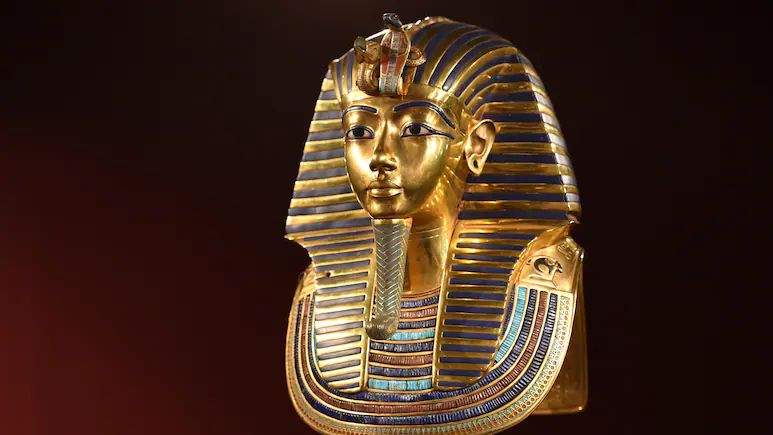The “Curse” That Haunted the Man Who Discovered King Tut’s Tomb

Cairo, November 5, 2025 The story of King Tutankhamun’s tomb remains one of history’s most fascinating tales—where archaeology, myth, and mystery meet. As Egypt celebrates the grand opening of the Grand Egyptian Museum in Cairo, which showcases over 5,000 treasures from the young pharaoh’s tomb, the legend of the “Pharaoh’s Curse” has resurfaced once again. The man at the center of this legend was Lord Carnarvon, a British aristocrat and passionate Egyptology supporter. After a serious car accident in 1903, he sought Egypt’s warmer climate for recovery and soon began funding archaeological digs. His greatest investment came in 1922, when he financed Howard Carter’s expedition that uncovered the tomb of King Tutankhamun in the Valley of the Kings—one of the greatest archaeological finds of all time. But soon after the tomb was opened, tragedy struck. In March 1923, Carnarvon was bitten by a mosquito on his cheek. When he accidentally cut the wound while shaving, it led to infection and blood poisoning. He died a few weeks later in Cairo, aged 56. His sudden death, followed by a power outage in the city and the mysterious death of his pet dog in England at the same hour, ignited global fascination. Newspapers and spiritualists claimed the long-feared “Curse of the Pharaohs” had struck. Reports suggested an inscription warned intruders of divine revenge, and even Sir Arthur Conan Doyle believed supernatural forces were involved. The world was gripped by the eerie coincidence, and the myth of the mummy’s curse became immortal. However, historians have long dismissed the curse theory. Medical experts point out that Carnarvon’s fragile health and the lack of antibiotics in the 1920s made him highly vulnerable. Tropical infections were common, and the conditions of the time likely caused his death rather than ancient magic. Of the 26 people present during the tomb’s opening, most lived long lives—further weakening the legend’s claim. Yet, the tale of the “Pharaoh’s Curse” endures because it captures the world’s imagination—blending wonder, mystery, and fear in equal measure. Today, King Tut’s treasures—including his iconic golden mask—are displayed proudly at the Grand Egyptian Museum, gleaming under bright lights rather than candlelit tombs. The legend of the curse lives on, a timeless reminder that history often holds secrets that science can explain—but mystery keeps alive. The Pharaoh’s Curse: The Mystery That Haunted King Tut’s Tomb When King Tutankhamun’s tomb was opened in 1922, the world gasped — not just at its golden treasures, but at the eerie fate that followed. Lord Carnarvon, the man who funded the discovery, died mysteriously soon after — from an infected mosquito bite. His sudden death in Cairo, followed by a blackout and his dog’s death back in England, sparked whispers of the legendary “Curse of the Pharaohs.” For decades, people believed the boy king’s spirit had taken revenge on those who disturbed his rest. Newspapers ran wild stories, and even Sherlock Holmes’ creator, Sir Arthur Conan Doyle, hinted at supernatural forces. But science tells a simpler truth: Carnarvon’s weak health and the lack of antibiotics in the 1920s likely led to his death. Still, the legend endures — because who doesn’t love a story where history meets mystery? Today, Tutankhamun’s treasures rest safely in Cairo’s Grand Egyptian Museum, gleaming as bright as ever, the curse smiling silently behind its golden mask.




